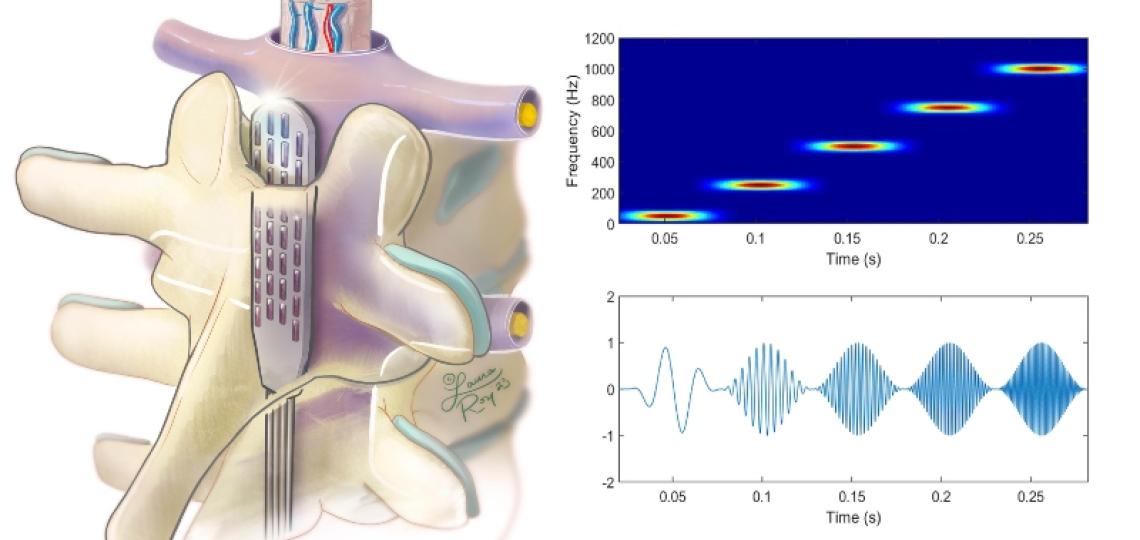Deep Brain Stimulation
Deep brain stimulation (DBS) for motor disorders such as Parkinson’s Disease (PD) and Essential Tremor has advanced significantly with the introduction of directional DBS leads and pulse generators capable of sensing brain activity. Our research effort, supported by NIH 1R01NS124650, studies the electrophysiological patterns in different Parkinson phenotypes, with the goal of personalizing DBS therapy for the specific symptoms a given patient experiences.

Read more: Telkes I, Viswanathan A, Jimenez-Shahed J, Abosch A, Ozturk M, Gupte A, Jankovic J, Ince NF. Local field potentials of subthalamic nucleus contain electrophysiological footprints of motor subtypes of Parkinson's disease. Proc Natl Acad Sci USA. 2018 Sep 4; 115(36): E8567-E8576.
Spinal Cord Stimulation
Spinal cord stimulation (SCS) can be effective therapy for chronic pain and is supported by high quality medical evidence for the treatment of back and leg pain, complex regional pain syndrome, and peripheral diabetic neuropathy. However, current modes of spinal cord stimulation can be limited by therapy tolerance, and limited targeting of the painful region. With support from NIH 1UG3NS121563, and in collaboration with Boston Scientific Corporation, we will study the use of time varying stimulation to improve SCS therapy.

Cancer Pain
The management of medically refractory cancer pain requires a multimodal approach and includes care by oncologists, supportive care, pain medicine. For those patients who continue to suffer, minimally invasive techniques to lesion brain and spine pain processing systems may be considered. Our lab (NIH 5R01NR018481) is currently performing a randomized controlled trial to study spinothalamic tract lesioning for refractory somatic cancer pain.
Minimally Invasive Cordotomy for Refractory Cancer Pain: A Randomized Controlled Trial
Up to 30% of patients with cancer continue to suffer from pain despite aggressive supportive care. The present study aimed to determine whether cordotomy can improve cancer pain refractory to interdisciplinary palliative care.
Somatotopy and Organization of Spinothalamic Tracts in the Human Cervical Spinal Cord
Understanding spinothalamic tract anatomy may improve lesioning and outcomes in patients undergoing percutaneous cordotomy.








